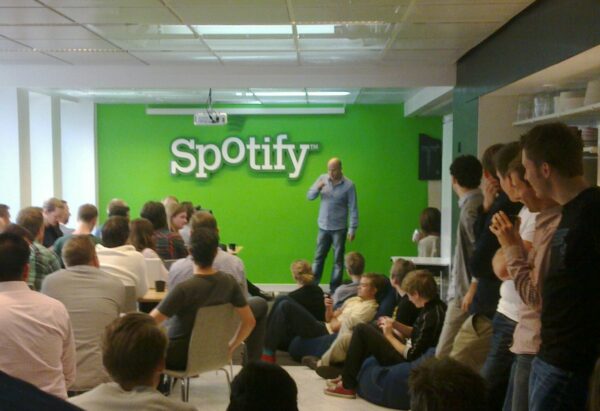Spotify has now reportedly responded to criticism from podcasters concerning its recent announcement to implement public play counts for all podcasts.
Initially introduced as a means to attract new listeners, the feature faced swift backlash from creators who argued it would favor established shows while sidelining smaller ones.
In response to these concerns, Spotify modified its approach. The company announced that play counts would only be displayed for podcasts that achieve a minimum of 50,000 plays.
Instead of providing exact figures, Spotify will update these counts at specific milestones—such as 100,000 or 1 million plays—rather than on an ongoing basis.
“We plan to roll this newly evolved version of play counts over the coming week,” Spotify stated in a blog post. “This update reflects our evolving efforts to provide the best insights for creators and a clear experience for their fans.”
For years, podcast hosting platforms, including Apple Podcasts, have lacked transparency regarding the popularity of individual shows.
While users can view ratings and rankings, understanding whether a podcast has an audience in the tens or hundreds of thousands remains challenging.
Spotify’s initial plan aimed to eliminate this ambiguity, but many creators felt it might undermine the unique appeal of podcasting, which has traditionally been less competitive than platforms like YouTube.
Podcasters have also raised issues regarding the inconsistency of metrics across platforms.
The Interactive Advertising Bureau (IAB) has been working to standardize what constitutes a “play,” but discrepancies remain between platforms like Spotify and YouTube.
For instance, Spotify defines a play as an instance where “people actively tried” the content, while streams and downloads only register after 60 seconds of engagement.
The backlash from creators underscores a broader tension in the podcasting industry. Many podcasters appreciate the medium’s egalitarian nature, where niche content can thrive without the pressure of constant public scrutiny.
However, Spotify’s new feature risks shifting the landscape toward a more competitive environment, where visibility may be skewed in favor of those already enjoying substantial audiences.
The decision to adjust how play counts are displayed reflects Spotify’s recognition of these concerns. By setting a threshold for visibility, the company aims to strike a balance between promoting popular content and allowing emerging voices a chance to be heard.
As the podcasting industry continues to grow, the implications of Spotify’s policies will likely reverberate throughout the medium.
The changes may influence how creators approach their content strategies and how listeners discover new shows. With the ongoing evolution of metrics and visibility, Spotify’s decisions could reshape the podcasting landscape, for better or worse, in the months to come.
[READ MORE: Coinbase Reveals Customers’ Data Compromised by Hackers]









